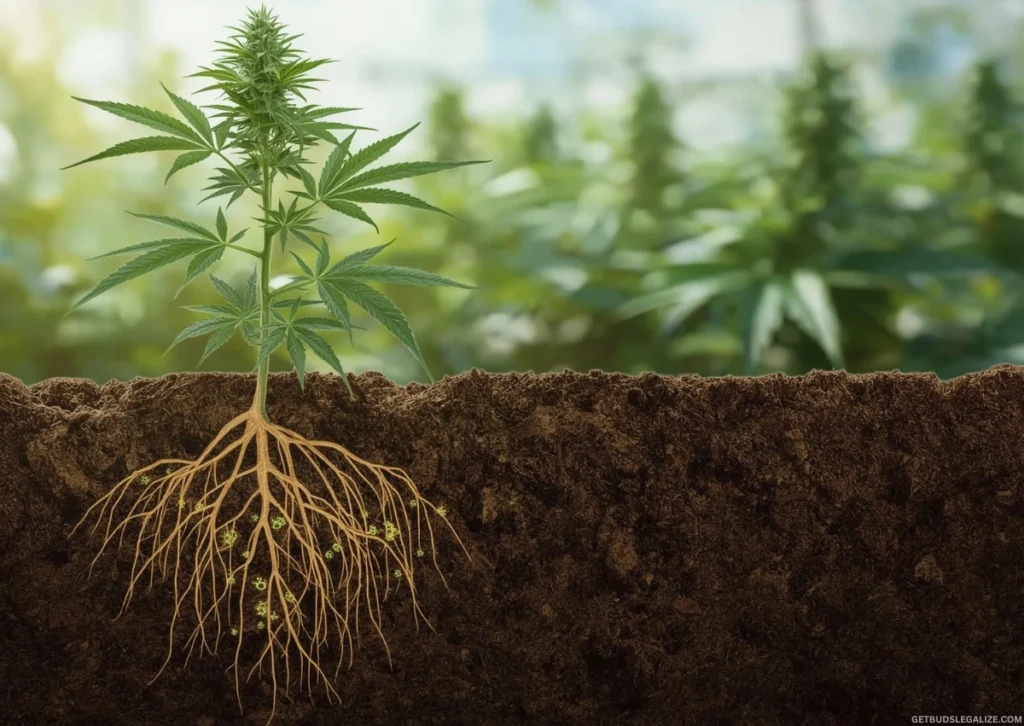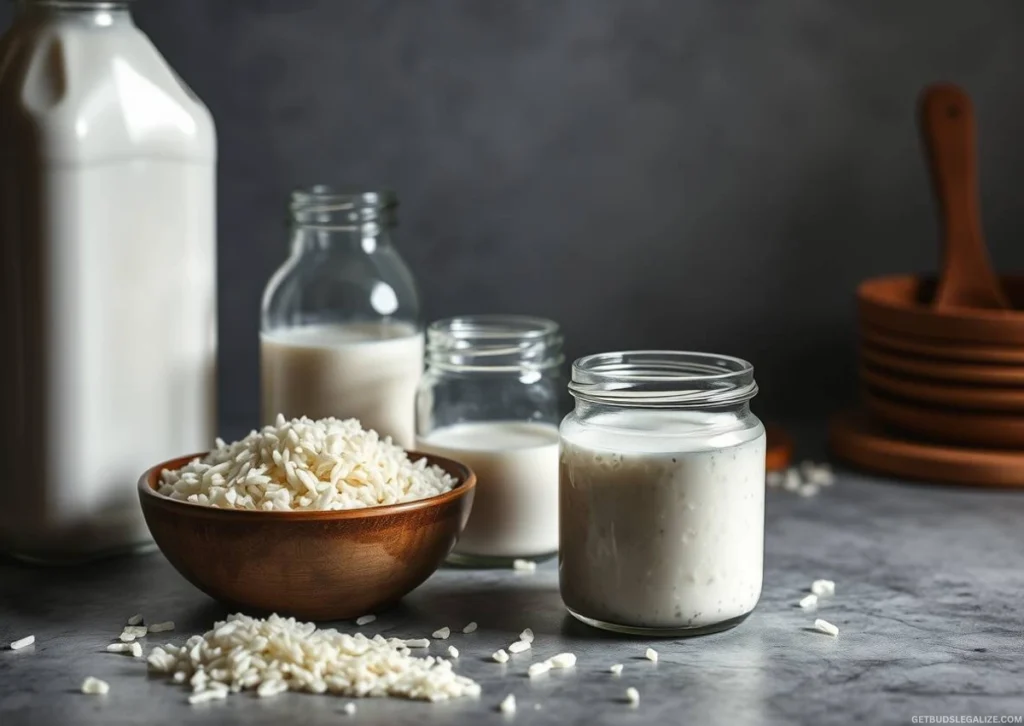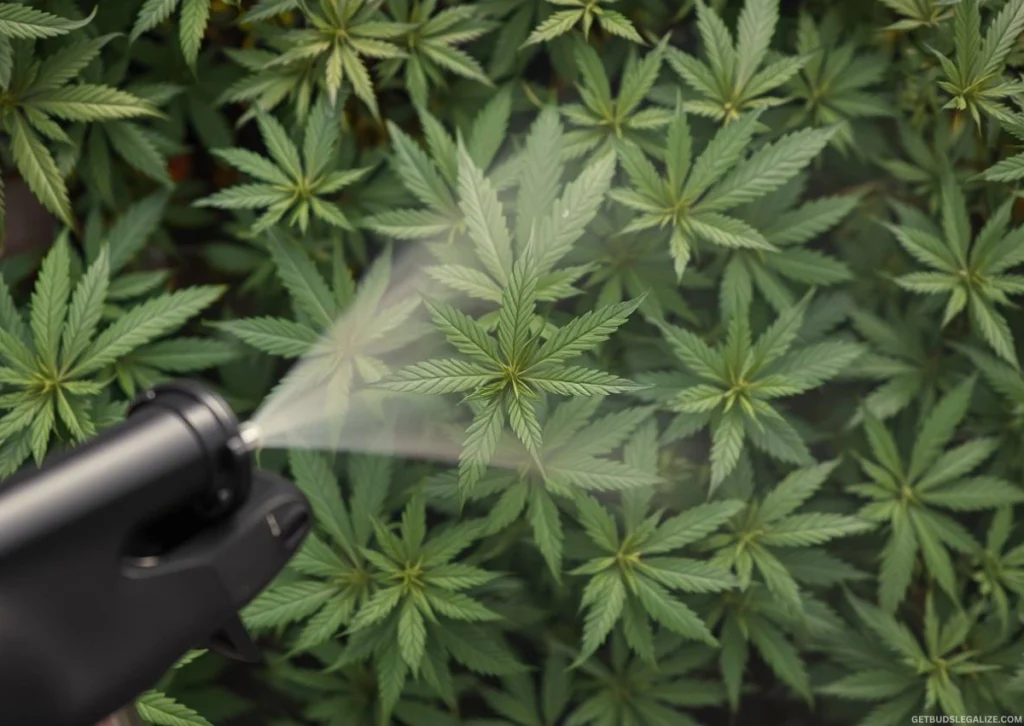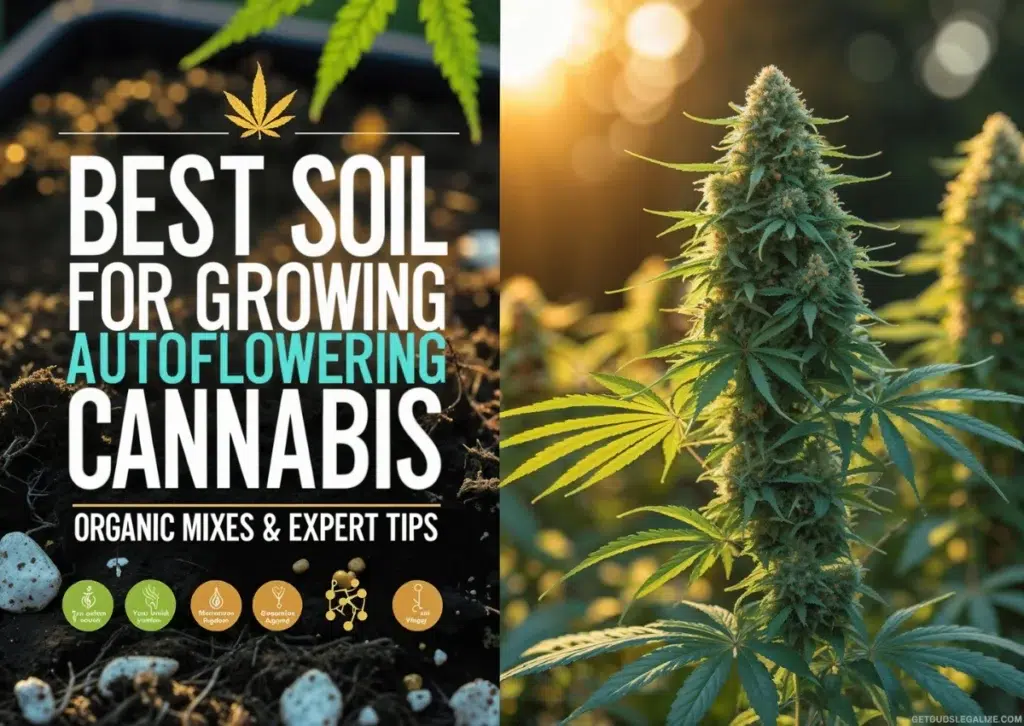Lactic Acid Bacteria for Cannabis Plants: A Complete KNF Grower’s Guide
If you’re growing cannabis—indoors or outdoors—and want healthier roots, stronger disease resistance, and better nutrient uptake, it’s time to meet LAB: lactic acid bacteria.
A cornerstone of Korean Natural Farming (KNF), LAB acts like a probiotic for your soil, shielding your plants from harmful microbes while boosting growth naturally.
In this guide, you’ll learn how lactic acid bacteria work, how to make your own LAB, and why it’s one of the most effective tools in organic cannabis cultivation.
What Is Lactic Acid Bacteria (LAB) and Why It Matters for Cannabis Growers
Lactic Acid Bacteria (LAB) are beneficial microbes naturally present in fermented foods, soil, and even our own digestive systems. In KNF cannabis farming, LAB is nicknamed the “soil police” for its ability to suppress harmful microbes while fostering a balanced and thriving microbiome.
Because LAB are facultative anaerobes, they thrive in both aerobic and anaerobic environments, making them ideal for all growing systems—including living soil, no-till beds, pots, and even hydroponics.

Why Use Lactic Acid Bacteria for Cannabis?
The benefits of lactic acid bacteria for cannabis plants go far beyond disease control. LAB supports regenerative agriculture and improves nearly every aspect of plant health.
Lactic Acid Bacteria Benefits for Cannabis Plants:
| Benefit | Description |
| Pathogen Suppression | LAB outcompetes pathogens like Fusarium, E. coli, and Pseudomonas, helping prevent root rot and fungal diseases. |
| Organic Matter Breakdown | LAB accelerates decomposition, improving soil aeration and nutrient bioavailability. |
| Soil Microbiome Support | LAB promotes microbial diversity, which leads to a more resilient and self-regulating root zone. |
| Enhanced Nutrient Cycling | Releases macronutrients such as nitrogen, phosphorus, and potassium into plant-available forms. |
| Terpene & Cannabinoid Boost | Healthier plants often produce more aromatic, flavorful, and potent buds. |
| Stress Recovery | LAB strengthens root health, improving resilience during transplanting, droughts, or heat stress. |
| Versatile Use | LAB is useful in composting, foliar sprays, odor control, and even animal care. |
Related Article:
LAB Fermentation: How It Works in Natural Cannabis Farming
Lactic acid bacteria fermentation involves culturing wild bacteria that feed on sugars and convert them into lactic acid—a natural antimicrobial. This acid both preserves the LAB and amplifies its population, creating a strong probiotic inoculant.
LAB fermentation typically starts with a rice wash, followed by adding milk (or a plant-based sugar source). The result: a serum full of beneficial microbes ready to enhance soil health and plant immunity.
💡 Pro Tip: Add 10–20 ml of LAB to compost tea or worm leachate before brewing to supercharge microbial activity.

How To Make Lactic Acid Bacteria at Home (DIY LAB Recipe)
Want to culture your own plant-friendly probiotics? Making Lactic Acid Bacteria (LAB) at home is easier than you might think—and it only takes a few simple ingredients. Here’s a step-by-step guide using simple ingredients.
Ingredients You’ll Need:
- 1 cup of uncooked white rice
- Chlorine-free water (to preserve microbial activity)
- 1 liter of milk (raw, pasteurized, or plant-based like rice or oat milk)
Step-by-Step LAB Fermentation Instructions
Step 1: Rice Wash Fermentation
- Start by rinsing 1 cup of uncooked white rice with chlorine-free water.
- Collect the cloudy, starchy rinse water—this is your microbial starter, rich in wild lactic acid bacteria from the rice surface.
- Pour the liquid into a clean glass jar and cover it loosely with a paper towel or breathable cloth (secure with a rubber band).
- Place the jar in a dark environment maintained at approximately 20°C (68°F) to encourage optimal microbial activity.
- Let it ferment for 3 to 5 days, until the liquid has a slightly sour smell and turns cloudy off-white. This indicates successful microbial activation.
Step 2: Feeding LAB with Milk
Once your rice wash is ready:
- Strain and collect 100 ml of the fermented rice wash.
- Combine it with 1 liter of milk (raw, pasteurized, or plant-based alternatives like oat or rice milk work too).
- Pour the mixture into a loosely covered jar and ferment at the same room temperature.
Over 3 to 6 days, the mixture will separate into:
- A thick, yogurt-like curd on top
- A yellowish, translucent liquid at the bottom—this is your LAB serum
Step 3: Strain & Store
- Carefully strain the liquid through cheesecloth or a fine mesh to separate it from the curds.
- Pour the LAB liquid into a clean glass jar or bottle for storage.
Storage Options:
- Refrigerated (no sugar): Lasts up to 6 months
- Room temperature: Add raw cane sugar until fully saturated for a stable shelf life of up to 1 year
💡 Pro Tip: Don’t waste the curd! It’s probiotic-rich and can be fed to pets, poultry, or livestock as a natural supplement.

How To Use LAB in Cannabis Cultivation
Lactic Acid Bacteria (LAB) is one of the most adaptable tools in natural farming—and cannabis cultivation is no exception.
Application Methods and Benefits of LAB:
| Application | How to Use | Benefit |
| Foliar Spray (Preventive) | Dilute 1–2 ml LAB per 1 liter chlorine-free water. Spray weekly on foliage or soil. | Boosts plant immunity, balances microbial populations, and improves resistance to pathogens. |
| Foliar Spray (Corrective) | Use 20–50 ml LAB per 1 liter water. Spray directly on affected areas. | Treats outbreaks of fungal or bacterial diseases; helps suppress pathogens on contact. |
| Soil Drench | Apply 1–2 ml/L LAB solution to the soil every 1–2 weeks. | Enhances root health, promotes microbial diversity, and improves nutrient cycling. |
| Compost or Bokashi Starter | Add LAB during early composting stages. | Accelerates decomposition and boosts beneficial microbial populations. |
| Transplant Recovery | Apply LAB to soil or roots after moving plants. | Reduces transplant shock and improves root establishment. |
| Vegetative & Flowering Booster | Spray on leaves during veg and early bloom stages. | Builds immunity, promotes strong plant structure, and supports early flowering health. |
| Grow Room Sanitation | Dilute and use LAB to clean trays, pots, tools, and hydroponic lines. | Natural antimicrobial cleanser; suppresses harmful microbes without harsh chemicals. |
| Odor & Ammonia Control | Add LAB to worm bins, compost teas, or livestock pens. | Neutralizes foul odors and helps reduce ammonia levels in organic waste zones. |
💧 Important Note: Always use chlorine-free water when mixing or applying LAB to protect microbial viability.
Related Article:
Final Thoughts: Why LAB Belongs in Every Cannabis Grow
Lactic Acid Bacteria (LAB) is one of the most powerful, affordable tools for cannabis growers focused on organic, regenerative methods. It supports healthy roots, robust plant growth, improved aromas and potency, and enhanced microbial diversity.
Whether you’re cultivating outdoors in soil or growing hydroponically indoors, LAB helps build a resilient, high-performance plant ecosystem.
💬 Stay Connected & Keep Growing
If you found this guide useful and want more regenerative grow tips:
- Follow us on Facebook & Twitter
- Subscribe to our newsletter for organic cannabis growing insights
- Share this post with growers who want natural, high-performance cultivation tips
Grow naturally – Grow smarter – Grow with LAB!
Frequently Asked Questions (FAQs) about Lactic Acid Bacteria for Cannabis
LAB improves root health, boosts nutrient uptake, and suppresses harmful microbes. This leads to stronger growth, bigger yields, and better terpene and cannabinoid profiles.
Lactic acid bacteria promote root development, microbial diversity, and nutrient cycling. In cannabis cultivation, they enhance soil structure, plant immunity, and overall plant vitality using 100% natural methods.
Unlike chemical treatments, LAB enhances natural disease resistance, improves soil biology, and supports regenerative agriculture without disrupting beneficial microbes.
Yes, but limit foliar spraying to early flowering only. For mid-to-late bloom stages, use LAB as a soil drench to avoid bud mold.
That’s the active LAB serum. The curds float on top while the usable liquid probiotic settles below. This serum is what you apply to plants.
Lactic acid bacteria are easy to culture because milk provides proteins and sugars that LAB feed on. This fermentation method produces a powerful, plant-safe probiotic that improves cannabis health and soil quality.
Raw milk is ideal, but pasteurized, rice, or oat milk also work. Avoid ultra-pasteurized or flavored milk.
Yes, rice or oat milk supports fermentation and is great for vegan growers. Results may vary, so ensure proper fermentation by monitoring separation and smell.
Not exactly. While yogurt drinks do contain LAB, they often include sugars, flavorings, or preservatives that can harm soil microbes or attract pests. For cannabis use, it’s best to culture your own LAB or buy unflavored, agricultural-grade LAB.
Yes. You can purchase LAB products from gardening suppliers, Korean Natural Farming (KNF) sources, or online retailers. Make sure the product is free from additives and safe for agricultural use.
Absolutely. Homemade lactic acid bacteria is often more active and cost-effective than commercial products when made with clean tools and fresh ingredients.
- Refrigerated (no sugar): Up to 6 months
- Room temperature: Add raw cane sugar until saturated for up to 1 year
- Preventive: Every 1–2 weeks
- For stress/disease: 20–50 ml per liter as needed
Yes. Use 1–2 ml per liter of chlorine-free water. Apply in the morning or evening to reduce leaf burn risk.
Chlorine and chloramine—common in tap water—are disinfectants that kill bacteria, including beneficial ones like LAB (lactic acid bacteria). Using chlorinated water can significantly reduce the effectiveness of your LAB applications.
Use these alternatives instead:
- Rainwater
- Filtered or dechlorinated water
- Tap water that has been left to sit uncovered for 24–48 hours (to allow chlorine to evaporate)
Yes. LAB pairs well with IMO, FPJ, FAA, and others to increase microbial diversity and accelerate fermentation.
Yes. LAB thrives in both aerobic and anaerobic conditions, stabilizing the root zone in DWC, NFT, and soilless media.
LAB is a single-strain culture, while EM-1 includes LAB, yeasts, and photosynthetic bacteria. LAB is easier and cheaper to DIY, and ideal for antifungal applications.
Not exactly. Lactic acid bacteria (LAB) play a specific role in suppressing pathogens and enhancing nutrient availability, but they don’t provide the same benefits as mycorrhizal fungi or EM-1. Mycorrhizae form symbiotic relationships with plant roots to boost water and phosphorus uptake, while EM-1 contains a broader mix of microbes for overall soil health. For best results, use LAB alongside these inoculants to build a balanced, diverse soil microbiome.
Yes. LAB is widely used in animal husbandry and is safe when diluted properly. It can even be fed directly to animals as a probiotic.
ILGM Fertilizer:
Feed Your Plants Right

The Ultimate Cannabis Fertilizer – designed to fuel every stage from seedling to harvest.
✅ Feeds 5+ plants
✅ Big savings with bundle
✅ Works in soil, coco, or hydro
✅ Supports bigger, healthier yields
ILGM Plant Protector:
Ultimate Cannabis Protection

Shield your plants from pests and disease—naturally and effectively.
Protect From Seedling to Harvest
✅ Protects up to 20 plants
✅ Works in soil, coco, or hydro
✅ Fights pests & diseases fast
✅ Keep your grow healthy & stress-free























